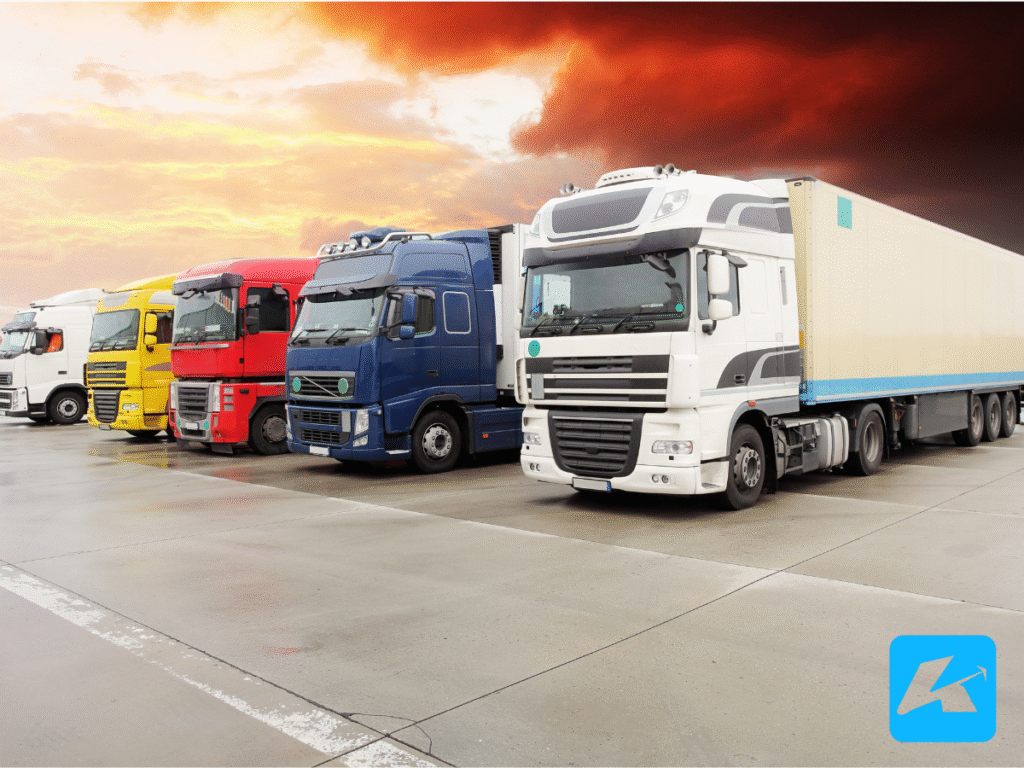In today’s fast-moving world, a streamlined supply chain is the backbone of successful shipping. But with rising costs, tight deadlines, and unexpected disruptions, efficiency can feel elusive. Enter data-driven logistics—a game-changer that uses real-time insights to optimize every step of your supply chain.

How do you harness data to keep your freight flowing smoothly?
This guide shares five practical strategies to help shippers leverage data-driven logistics for a smarter, more efficient supply chain.
1. Embrace Data Analytics for Better Visibility
Data is the fuel of modern logistics. Tools like Transportation Management Systems (TMS) and analytics platforms provide a clear view of your supply chain—from supplier to delivery.
By analyzing data on routes, transit times, and costs, you can spot inefficiencies, like a carrier consistently delayed on a specific route. Real-time tracking shows where your cargo is and flags issues, like a truck stuck in traffic.
This visibility lets you make quick, informed decisions, cutting delays and costs.
Pro Tip: Invest in a TMS with robust analytics. Look for dashboards that highlight key metrics like on-time delivery rates or fuel expenses.
2. Optimize Routes with Predictive Insights
Choosing the fastest or cheapest route isn’t guesswork anymore. Predictive analytics, powered by historical and real-time data, can recommend optimal routes based on traffic, weather, or carrier performance.
For example, data might show that a Midwest route faces frequent snow delays in winter, prompting you to shift to a southern corridor. Machine learning models can even forecast demand spikes, helping you plan capacity.
Kargage, a Jackson, Mississippi-based broker, uses data-driven tools to match shippers with efficient carriers and routes.
Action Step: Use route optimization software or consult your broker for data-backed routing options tailored to your cargo.
3. Streamline Operations with Automation
Manual processes—like entering shipment details or chasing invoices—eat time and invite errors. Data-driven automation speeds things up.
Automated systems can generate Bills of Lading, schedule pickups, or file customs paperwork with minimal human input. Electronic Data Interchange (EDI) connects you with carriers and suppliers, syncing data instantly. This cuts paperwork delays and ensures accuracy.
Automation also frees your team to focus on strategy, not repetitive tasks.
Quick Tip: Adopt an automated TMS or partner with a logistics provider offering EDI integration to reduce manual work.
4. Enhance Partnerships with Data Sharing
Strong relationships with carriers and suppliers are key, and data sharing makes them stronger. By sharing real-time data—like inventory levels, delivery schedules, or demand forecasts—you align everyone’s efforts.
For instance, sharing shipment tracking with a carrier can help them prioritize your load during a capacity crunch. Data transparency builds trust and enables faster responses to disruptions, like port delays.
Kargage leverages data to connect shippers with over 31,000 carriers, ensuring seamless coordination.
Best Practice: Set up a shared digital platform, like a cloud-based portal, to exchange data with partners in real time.
5. Monitor and Adapt with Continuous Improvement
Data-driven logistics isn’t a one-and-done fix—it’s about ongoing improvement. Regularly analyze key performance indicators (KPIs) like delivery times, freight costs, or carrier reliability to spot trends.
For example, if data shows a carrier’s on-time rate dipping, consider switching or renegotiating terms. Use predictive models to anticipate disruptions, like fuel price hikes, and adjust plans. Industry reports, like those from FreightWaves, highlight how shippers use KPIs to stay agile.
Continuous monitoring keeps your supply chain sharp and ready for change.

How to Start: Set monthly reviews to analyze KPIs. Use insights to tweak routes, carriers, or processes for maximum efficiency.
Putting It All Together
Data-driven logistics transforms your supply chain from a guessing game to a precision machine. By embracing analytics, optimizing routes, automating tasks, sharing data with partners, and monitoring performance, you can cut costs, boost efficiency, and stay resilient.
This approach isn’t just about keeping up—it’s about staying ahead. At Kargage, we’ve seen how data empowers our clients to ship smarter. But this isn’t about us—it’s about you.
Ready to optimize your supply chain? Call us at (727) 628-3545 for a quote. With these strategies, you’re set to make data your logistics superpower.

